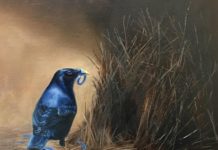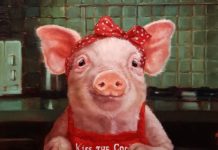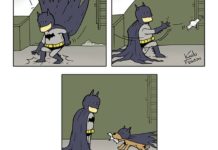Olivia Knapp’s meticulously detailed pen illustrations are created using a “line to dot” rendering method as well as the rarer “dot and lozenge” rendering method. According to her website, “dot and lozenge” is a practice that was used by 16th-century masters, in which a dot is placed in the center of a diamond shape made by a cross-hatching pattern, helping to refine the transition between values.
Knapp’s tight cross-hatching technique involves long, slow, and steady curved lines that articulate the surface contours of her subjects; a technique that’s very much inspired by European line engravings of decorative relief and scientific specimens in the 16th to 18th centuries. The result is black and white illustrations made of lines and dots, that look as though they were printed.
This very specific technique was learned over time, but oddly enough Knapp discovered it by chance. “In 2010, when I was still working as a full-time Textile Designer, I was asked to create a t-shirt print inspired by an engraving of a Baroque relief,” she told Jung Katz. “The process of reimagining this aesthetic with pen and paper was intensely enjoyable. By the time I completed the print I just wanted to do more.”
She started experimenting more with cross-hatching and after leaving her job, wholly devoted herself to it. “I started showing a few friends and gradually people started approaching me, wanting me to create logos and illustrations for them,” she recalls. “And now, it’s my full-time gig. That t-shirt print was the birthplace of my cross-hatching style that I use today.”
















